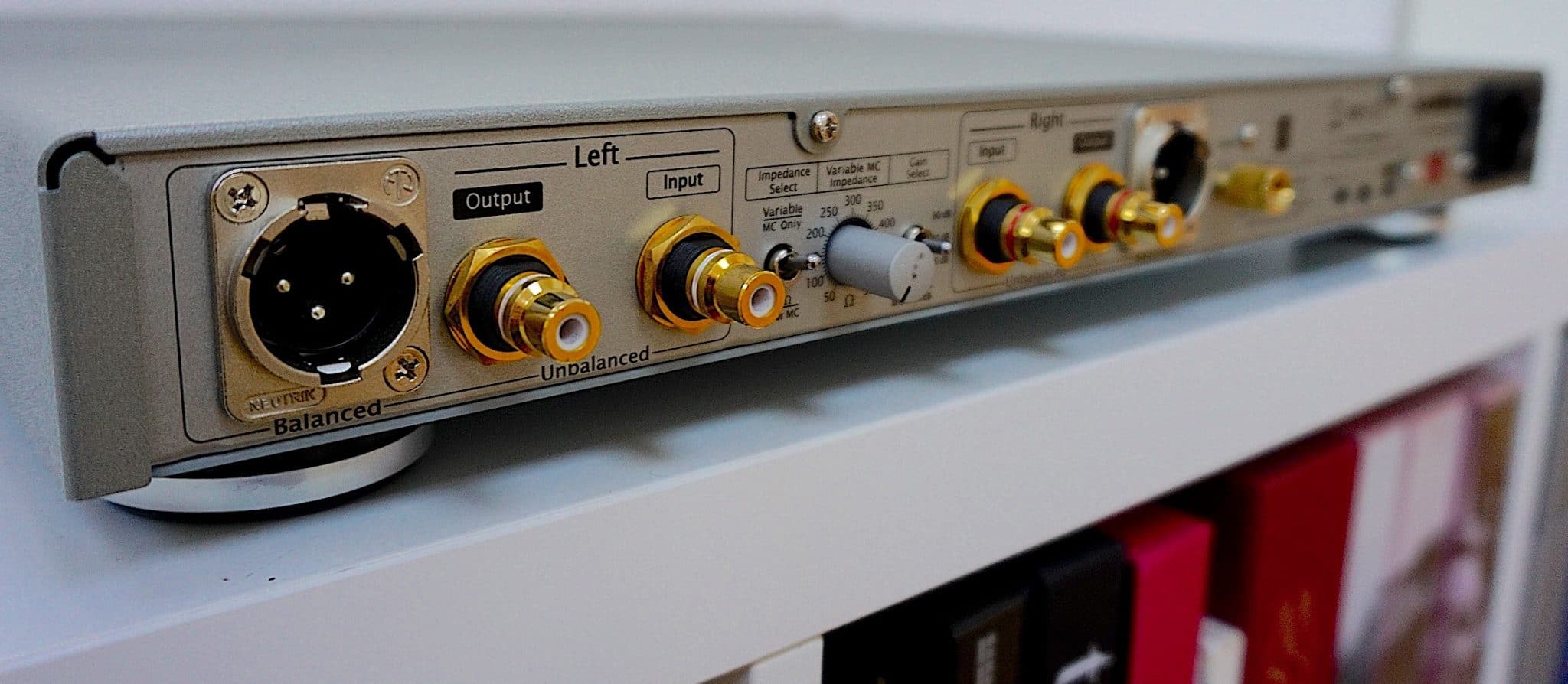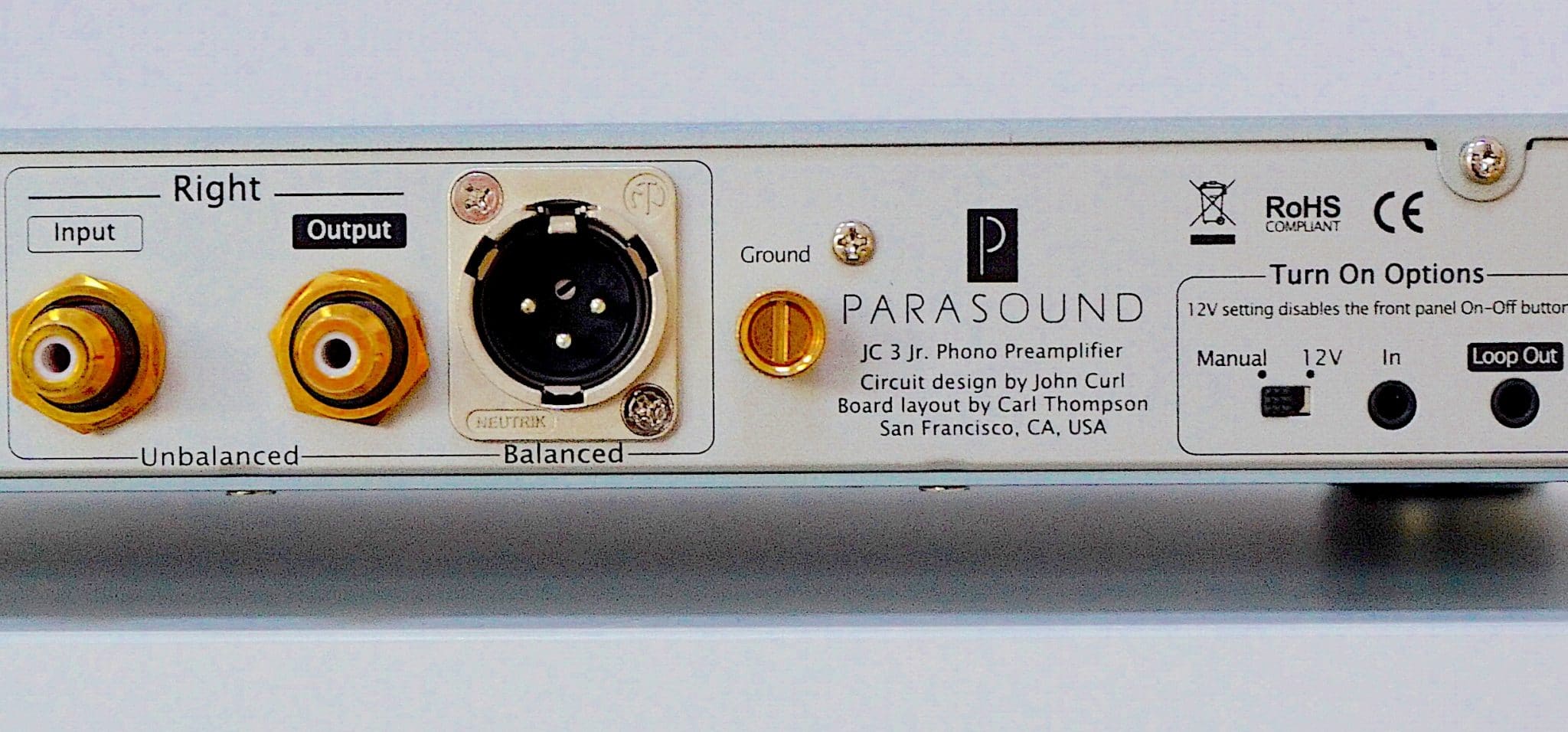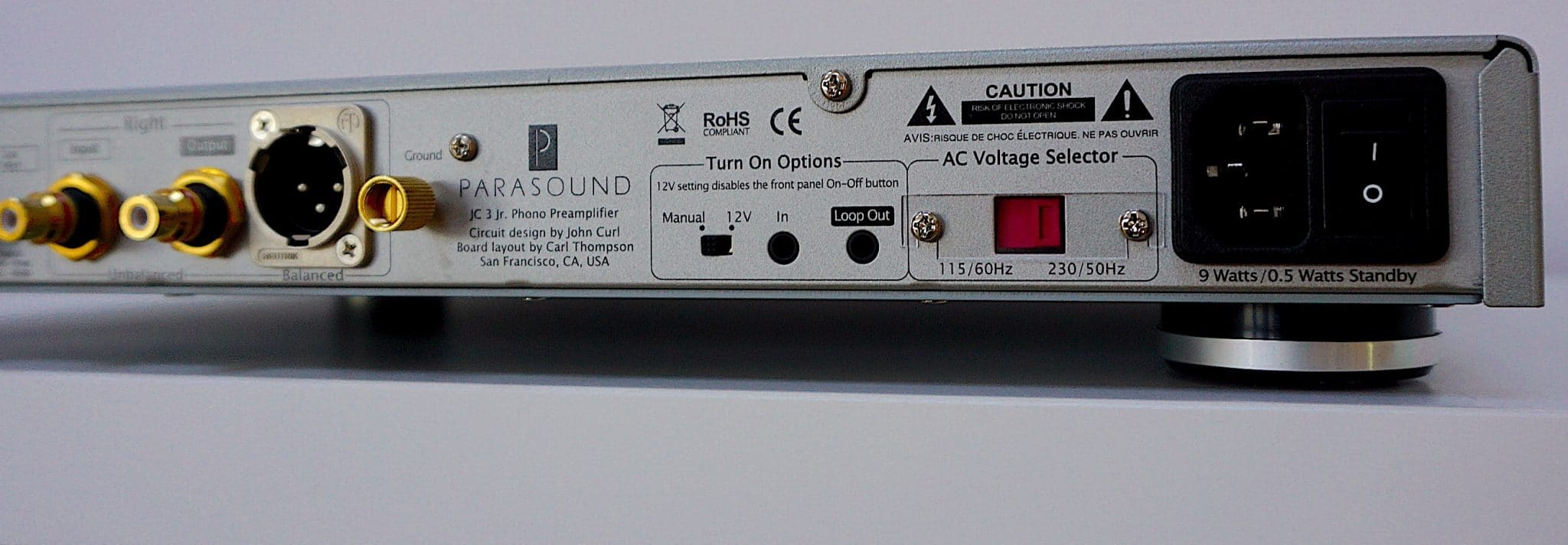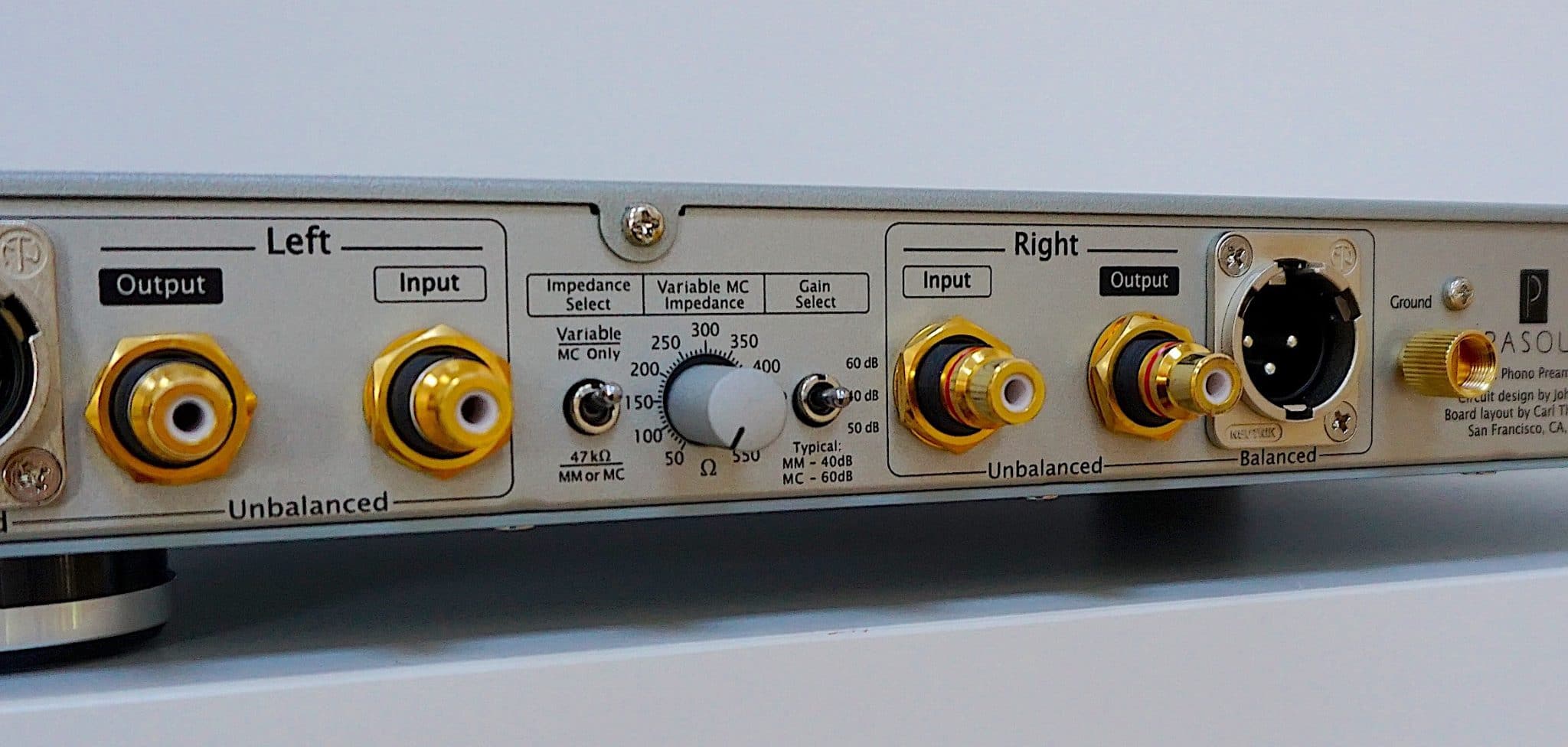The Article
JC3 Jr From Parasound: Keeping The Balance
27th February 2019

Released as a cut-down version of the more expensive JC3+, Paul Rigby reviews the Parasound JC3 Jr phono amplifier
A few years back, I reviewed Parasound’s JC3+ phono amplifier, a dual mono design that was noted for its particular internal layout. There was shielding here and isolation there while large power-supply filter capacitors were added to reduce strain on the amplifier. Lots of attention was bestowed upon that phono amp.
This new design is a cut down version of the JC3+ with a much lower price. To do that, Parasound has reduced the internal isolation and separation. It’s combined internal boards, removed the dual mono feature and cut a few more corners while it was at it. That said, the unit’s toroidal power transformer retains shielding while there are plenty of quality parts included such as REL capacitors, Vishay-Dale resistors and more.
The design of the chassis is intriguing and one that will draw the eye. So job done then, eh? Well, kinda. Its a low slung chassis that only rises a little off the ground (63.5mm) and yet it takes up the footprint of a full-sized component (437 x 375mm) which ups the weight to 5.9kg. I realise that the aesthetic element is important and yes I see the family resemblance to its full sized brethren and how they might all look installed together in a neat stack arrangement (very Sunday Best) and I offer a decorative thumbs up for that but, on the other hand, because the required internal space in the JC3 Jr is obviously low, in relative terms, I wonder if the design could have been squeezed into a half sized chassis (saving space and maybe cash) or even a two-box design (to improve sonics)? I wonder if Parasound became a slave to the ornamental with this model?
The front of the chassis features a power button and a useful mono button. Around the back of the chassis, you will find an IEC power socket, ground knob, RCA inputs and outputs plus balanced outs. There’s a MM/MC toggle switch, variable impedance knob ranging between between 50 and 550 Ohms and a three-position switch selects 40dB, 50dB or 60dB of gain.
Setting up my system for RCA use, I initially positioned the gain at 60db. Any lower was really too low. My cartridge demanded a low loading of 100 Ohms.
SOUND QUALITY
I began with the single-ended connections and played Barclay James Harvest and Child of the Universe from Everyone is Everybody Else (Polydor). Compared to my valve-based PS3 phono amplifier, the JC3 Jr had a slightly aggressive demeanour within the upper mids. This was partly a symptom of solid state versus valves, I reckon, in which the midrange projected a slightly less naturalistic presentation but did offer a greater focus and precision.
In fact, it is that very focus and precision that helped the music to gather pace. Because extraneous reverb and other frequencies were tidied and collected en route, the music moved forward at speed, adding to the musicality. That is, the nature of the rhythm and the beat were exacting, the lead vocal offered an accurate diction while the background analogue synths were meaty and textural.
There was more, though. If I was being hypercritical, I would also note a slight tension in the Parasound’s mids and I would point to the internal design detailed above for part of the reason. This meant losing elements of the grand from the grand piano as air was constricted a touch but the subtle secondary percussion from the tambourine was ‘visible’ to the ear without any effort.
Similarly, bass enjoyed great impact and weight giving the music a useful tonal balance overall. Gain had to be drastically reduced when compared to my two-box PS3 which might partly be down to the obvious and relatively large gain steps on the phono amplifier plus an increase in underlying noise from this one box system (hence that sense of tension mentioned above) but, saying that, noise was never too obvious, it didn’t dominate and it never really got in the way during play.
That said, I did wonder how a balanced approach might compare, though, so I swopped over the cables.
Balanced mode upped the gain by around 6db so I moved the rear gain switch from 60db to 50db and upped the pre-amp volume to an acceptable level. What I heard at this point was an increase in the natural smoothness and soundstage width from the balanced connections. That ease in terms of strain also helped the sound to loosen up, adding more space to the midrange and a sense of relaxation across the soundstage as a whole.
Yes, the solid state effect of the sound retained the accuracy and precision but the effect blended more effectively into the overall presentation. I was helped by the nature of my cartridge but if you can throttle back the gain further from 50db or 40db then the ease and influx of midrange air will improve again. Both 40db and 50db were improvements over the earlier 60db figure.
In general terms, when dealing with a phono amplifier, you want the phono amplifier to do its job but you want it done with as little effort from the phono as possible. You want it to do just enough. Even minor strain from the phono amp is amplified further down the chain. Hence, if you can throttle back on the JC3 Jr’s settings, all the better. The balanced connection gives you that opportunity.
I then turned to Nina Simone and And Piano! and the track Who Am I which is basically all about Simone and the keys.
Here, the balanced mode enhanced the articulation and diction of the Simone vocal providing an enhancement to the detail and emotion but the balanced connection, how can I put this, humanised her delivery. The little, subtle aspects of her voice were picked up here: a slight rasp here, a wavery note there and micro breaths flagged up too. A sense of realism was enhanced.
The piano, especially in her hands, retained that threat of chaos, where frequencies could emerge from anywhere and go anywhere. You felt that the piano was a living thing under her control.
Finally, I played the moving iron Soundsmith Aladdin (in MM mode) and played an LP from Jan Akkerman called Can’t Stand Music (CBS) and the track Piétons, a Chet Atkins-type guitar stroll of ease and richness. Via the JC3 Jr, the music had a funky bounce. You really wanted to make neck shapes and flick through a swathe of facial expressions while listening to this one. The precision and focus allowed the ear to track a host of detail which added layering and richness to the overall track, giving the music a flow that was immensely enjoyable.
CONCLUSION
In single-ended mode, because of the slight increase in noise at the sonic extremes, you may sacrifice a certain amount of space in the midrange and a sense of finesse in general terms around the soundstage but the trade-off, the plus points are a gain in focus and a sense of accuracy with pace in the bass that keeps the music moving.
The JC3 Jr unit actually comes alive in its balanced mode, though. The balanced connection is a swinging connection. That is, it grooved in a serious manner with both an impressive tonal balance but also a sense of sonic rightness that allowed the music to drift in a carefree and naturalistic manner.
PARASOUND JC3 JR Price: £2,199 Website: www.connecteddistribution.co.uk Tel: 01242 511133
GOOD: focus, precision, balanced mode, build quality, detail
BAD: chassis
RATING:
7 (Single-ended mode)
8 (Balanced Mode)
[Don’t forget to check out my Facebook Group, The Audiophile Man: Hi-Fi & Music here: www.facebook.com/groups/theaudiophileman for exclusive postings, exclusive editorial and more!]
REFERENCE
Origin Live Sovereign turntable
Origin Live Enterprise 12″ arm
Van Den Hul Crimson XGW Stradivarius Cartridge
Soundsmith Paua Mk.II cartridge
Icon PS3 phono amplifier
Aesthetix Calypso pre-amp
Icon Audio MB845 Mk.II monoblock amplifiers
Quad ESL-57 speakers with One Thing upgrade
Tellurium Q Silver Diamond cables
Blue Horizon Professional Rack System
Harmonic Resolution Systems Noise Reduction Components
All vinyl was cleaned using an Audio Desk’s Ultrasonic Pro Vinyl Cleaner










Hello Paul,
I am looking into upgrading my phono preamp and your Parasound JC3 Jr review caught my attention. Do you think the JC3 Jr is the best preamp for this price (assuming use in balanced mode)? Are there others you think would offer superior performance, or that may work better within my system? I am working with a Rotel RA-1592 amp, MusicHall 7.3 TT and Monitor Audio Silver 300 speakers (bought these on your recommendation and love them!).
Best regards,
Miguel
Hi Miguel Рwhat cartridge are you using on your turntable, that info may be useful? Looking at the list of equipment here, an external phono amp is highly recommended but a JC3 will only unbalance your system. I think you can do better than the Rotel and if you have a budget of around £2,000 or €2,000 or whatever then I would look to more urgent upgrades and re-assign how much you spend on each rather than ping for an overly expensive phono amp.
Currently I have an Ortofon Bronze cartridge.
Understanding the more urgent upgrade you refer to is the amplifier… With the budget you mentioned, what would you recommend?
(Also, just to fill out the picture, I am currently using a Vincent Pho 8 phono amp.)
Thanks!
Miguel
Just to save me hunting, Miguel – please remind me of your budget figure.
Oh no problem… you mentioned around 2,000 euros… that would be within my budget (assuming you were referring only to the amplifier, not including a phono amp…).
For the amp, as you mention Parasound – I would save a little more and grab a Halo integrated amp. Excellent indeed. One I’ve reviewed, actually: https://theaudiophileman.com/halo/